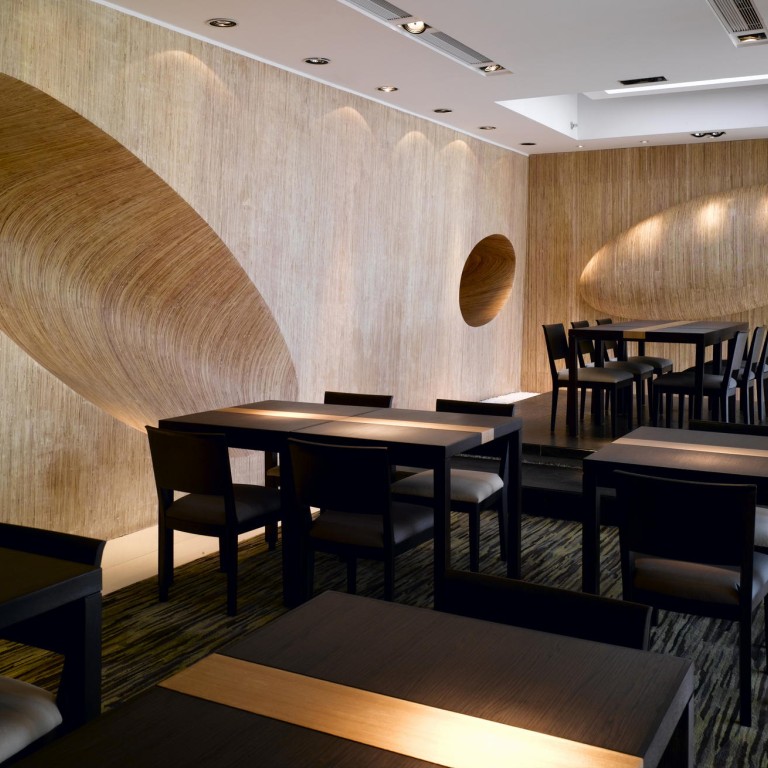
Architects rekindle passion for plywood, 70 years after Eames chair
What started as an experiment in practicality over appearance has developed into a cheap and flexible favourite more than 70 years on
Charles Eames caused quite a stir when he first used plywood to make a chair.
Until then, furniture had been heavy, solid and complex. He thought it should be lighter, simpler and more flexible.
Eames' wife and design partner, Ray, who he married in 1941, shared this view. And through their experimental work with moulded plywood - and later, moulded plastics - the pioneering "first couple" of modern design went on to help shape nearly every facet of US life.
More than 70 years on, Eames originals are museum pieces. But the love affair with a utilitarian material once considered a lesser being than solid wood continues. Why? Because it works. As Ray Eames said: "What works is better than what looks good." Looks can change, she added, "but what works, works".

Happily for the current generation of architects and designers who are rediscovering its attributes, plywood also looks great.
Plywood is made by layering thin sheets of wood and glueing them together.
Various design sites note the "surprising appeal" of this engineered material, which is both flexible and inexpensive, lending itself to creative uses on ceilings and wall finishes and for making strong, versatile furniture.
And all the while, it retains the beauty of natural wood.
Today, it's appearing everywhere - in residential design, commercial/office fitouts, even home construction.
Don't call it downmarket. Architectural firm OMA used plywood for dividing walls in the posh Hong Kong and New York exhibition space of America's Lehmann Maupin Gallery, the firm's own offices and "many other projects".

And CL3 Architects handcrafted plywood sheets into three giant artworks in the Beijing Shangri-La's Japanese restaurant, Nishimura. A young South Australian design firm, Genesin Studio, last year won a national award for its redesign of fashion retailer L.A.X's Adelaide store, using only plywood.
David Gianotten, partner in charge of OMA Asia Pacific, describes plywood as a material "that has a lot of character and can be applied in many shapes and circumstances. It is a rich, flexible and adaptable material".
It is durable and honest. You don't paint over it, so what you see is what you get
CL3 Architects' William Lim, who has also used it in the lobby of Marina Bay Sands' six-star casino in Singapore, says plywood gives "a beautiful layered effect and can be tooled into beautiful shapes".
Hong Kong designers are also being creative with it. Gene Miao, chief designer at 1:1 Limited, likes to leave the raw edges exposed, revealing the different textural layers. The key to this design technique, says Miao, is to use a quality product with no, or very few, holes.
"Usually, marine-grade or Baltic plywood will meet my requirements," he said.
Compared to hardwood, plywood is a more sustainable material - which is another reason why Miao uses it. "Good quality plywood is also very stable in humid conditions such as Hong Kong, since the grains of the wood layers are perpendicular to each other, which evens out the forces, hence the rigidity," he said.

The product's versatility is evident In Miao's own Ho Man Tin apartment. Apart from its use on cabinet doors, plywood applied to the living room walls in a "random relief" pattern adds visual interest and acoustic effect, reducing the echo when loud music is played.
Kevin Lim Chin-kwok, managing director of openUU, employed it as a key element in a warehouse-to-gallery conversion at Wong Chuk Hang, and the Wan Chai art centre of the Asian Cultural Council. In the gallery, plywood platforms cleverly conceal storage space below and also form decorative shelving.
"We try to use it in an orthogonal way [where objects meet at 90 degrees] to create space," he said.
Alain Wong Chi-hang, design director of COMODO Interior and Furniture Design, chose light-coloured plywood for his 2,000 sq ft Tsim Sha Tsui design studio. In contrast to the black-and-white palette of his previous studio, Wong says the softness of plywood feels more comfortable, introducing "a natural landscape" to an urban environment.
In some other countries compared to Asia, it's more commonly used in residential settings.
New Zealand architect Davor Popadich has lined the walls and ceilings of his Auckland home entirely with plywood, its warmth countering the bare concrete floors and exposed light bulbs of the interior's "natural aesthetic".
"I love it," Popadich says of the material. "Plywood can be structural, not just decorative - in our house, it does all the bracing. It is durable and honest. You don't paint over it, so what you see is what you get."
In Denmark, architecture firm Eentileen built a 1,345 sq ft home from 820 sheets of plywood - a job completed in just four weeks, undertaken to demonstrate a sustainable and inexpensive alternative to conventional housing.

